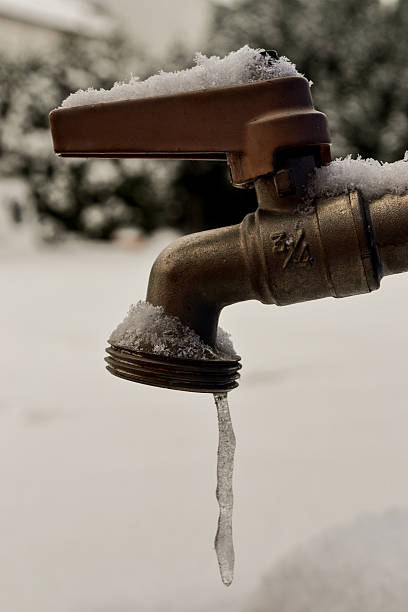Important Tips for Preventing Frozen Plumbing in Cold Weather Seasons
Important Tips for Preventing Frozen Plumbing in Cold Weather Seasons
Blog Article
The publisher is making several great pointers related to Helpful Tips to Prevent Frozen Pipes this Winter as a whole in this post beneath.

Winter can damage your pipes, particularly by freezing pipes. Right here's exactly how to prevent it from happening and what to do if it does.
Intro
As temperature levels decline, the risk of icy pipes increases, possibly bring about expensive repair work and water damage. Understanding just how to prevent icy pipes is vital for homeowners in cold climates.
Prevention Tips
Shielding susceptible pipelines
Wrap pipelines in insulation sleeves or use warm tape to protect them from freezing temperatures. Concentrate on pipelines in unheated or external locations of the home.
Home heating methods
Maintain indoor areas appropriately heated up, especially areas with plumbing. Open closet doors to allow cozy air to distribute around pipes under sinks.
Just how to determine frozen pipelines
Search for reduced water flow from faucets, unusual smells or sounds from pipelines, and visible frost on exposed pipelines.
Long-Term Solutions
Structural adjustments
Think about rerouting pipelines away from outside walls or unheated areas. Include additional insulation to attic rooms, basements, and crawl spaces.
Upgrading insulation
Buy top notch insulation for pipes, attic rooms, and walls. Correct insulation helps preserve consistent temperatures and minimizes the risk of frozen pipelines.
Safeguarding Exterior Plumbing
Yard pipes and exterior taps
Detach and drain pipes yard hoses before wintertime. Install frost-proof spigots or cover exterior taps with insulated caps.
Comprehending Icy Pipes
What triggers pipelines to ice up?
Pipelines ice up when revealed to temperatures listed below 32 ° F (0 ° C) for expanded periods. As water inside the pipelines freezes, it expands, taxing the pipeline walls and potentially triggering them to break.
Threats and damages
Frozen pipes can bring about water interruptions, residential or commercial property damages, and pricey fixings. Ruptured pipes can flooding homes and trigger considerable structural damage.
Indications of Frozen Piping
Recognizing frozen pipes early can avoid them from rupturing.
What to Do If Your Pipelines Freeze
Immediate activities to take
If you presume frozen pipes, keep faucets available to alleviate stress as the ice melts. Use a hairdryer or towels taken in warm water to thaw pipes gradually.
Conclusion
Preventing icy pipelines calls for aggressive procedures and quick reactions. By recognizing the causes, indications, and preventive measures, home owners can shield their plumbing throughout cold weather.
Helpful Tips to Prevent Frozen Pipes this Winter
UNDERSTANDING THE BASICS: WHY PIPES FREEZE AND WHY IT’S A PROBLEM
Water freezing inside pipes is common during the winter months, but understanding why pipes freeze, and the potential problems it can cause is crucial in preventing such incidents. This section will delve into the basics of why pipes freeze and the associated problems that may arise.
THE SCIENCE BEHIND FROZEN PIPES
When water reaches freezing temperatures, it undergoes a physical transformation and solidifies into ice. This expansion of water as it freezes is the primary reason pipes can burst. As the water inside the pipe freezes, it expands, creating immense pressure on the walls. If the pressure becomes too great, the pipe can crack or rupture, leading to leaks and water damage.
FACTORS THAT CONTRIBUTE TO PIPE FREEZING
Low Temperatures: Extremely cold weather, especially below freezing, increases the risk of pipes freezing. Uninsulated or Poorly Insulated Pipes: Pipes located in unheated areas, such as basements, crawl spaces, or attics, are more prone to freezing. Insufficient insulation or lack of insulation altogether exacerbates the problem. Exterior Wall Exposure: Pipes running along exterior walls are susceptible to freezing as they encounter colder temperatures outside. Lack of Heating or Temperature Regulation: Inadequate heating or inconsistent temperature control in your home can contribute to frozen pipes. PROBLEMS CAUSED BY FROZEN PIPES
- Pipe Bursting: As mentioned earlier, the expansion of water as it freezes can cause pipes to burst, resulting in significant water damage.
- Water Damage: When pipes burst, it can lead to flooding and water damage to your property, including walls, ceilings, flooring, and personal belongings.
- Structural Damage: Prolonged exposure to water from burst pipes can compromise the structural integrity of your home, leading to costly repairs.
- Mold and Mildew Growth: Excess moisture from water damage can create a favorable environment for mold and mildew growth, posing health risks to occupants.
- Disrupted Water Supply: Frozen pipes can also result in a complete or partial loss of water supply until the issue is resolved.
WHY CERTAIN PIPES ARE MORE PRONE TO FREEZING
- Location: Pipes located in unheated or poorly insulated areas, such as basements, crawl spaces, attics, or exterior walls, are at higher risk of freezing.
- Exterior Pipes: Outdoor pipes, such as those used for irrigation or exposed plumbing, are particularly vulnerable to freezing as they are directly exposed to the elements.
- Supply Lines: Pipes that carry water from the main water supply into your home, including the main water line, are critical to protect as freezing in these lines can affect your entire plumbing system.
- Underground Pipes: Pipes buried underground, such as those connected to sprinkler systems or outdoor faucets, can be susceptible to freezing if not properly insulated.
https://busybusy.com/blog/helpful-tips-to-prevent-frozen-pipes-this-winter/

We had been guided to that editorial about Helpful Tips to Prevent Frozen Pipes this Winter from a friend on another web property. Do you know somebody who is occupied with Helpful Tips to Prevent Frozen Pipes this Winter? Take a moment to promote it. I value your readership.
Book Today! Report this page